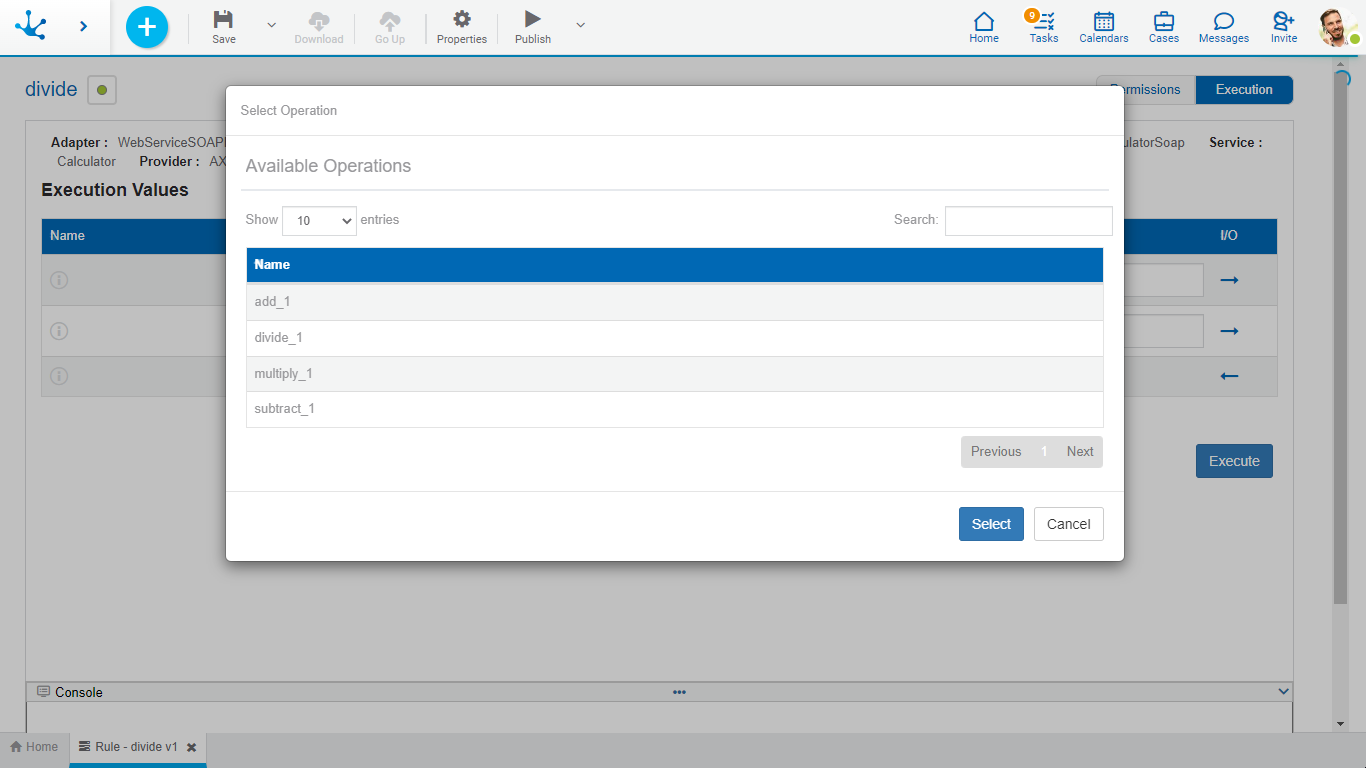Parameters
The second tab of the side panel corresponds to the rules parameter. In this tab, the input and output parameters are defined, which are the communication channel between rules and the processes that use them.
If the rule has enabled the property Enable Relation to a fFeld, some parameters are automatically generated to ensure correct implementation.
Parameters can be configured in any advanced rule except those of forms extension type.
Parameter Grid
The grid columns identify the properties of each parameter.
By placing the mouse over the grid, the following operations are enabled:
 Allows modifying an existing parameter.
Allows modifying an existing parameter.
![]() Allows deleting a parameter.
Allows deleting a parameter.
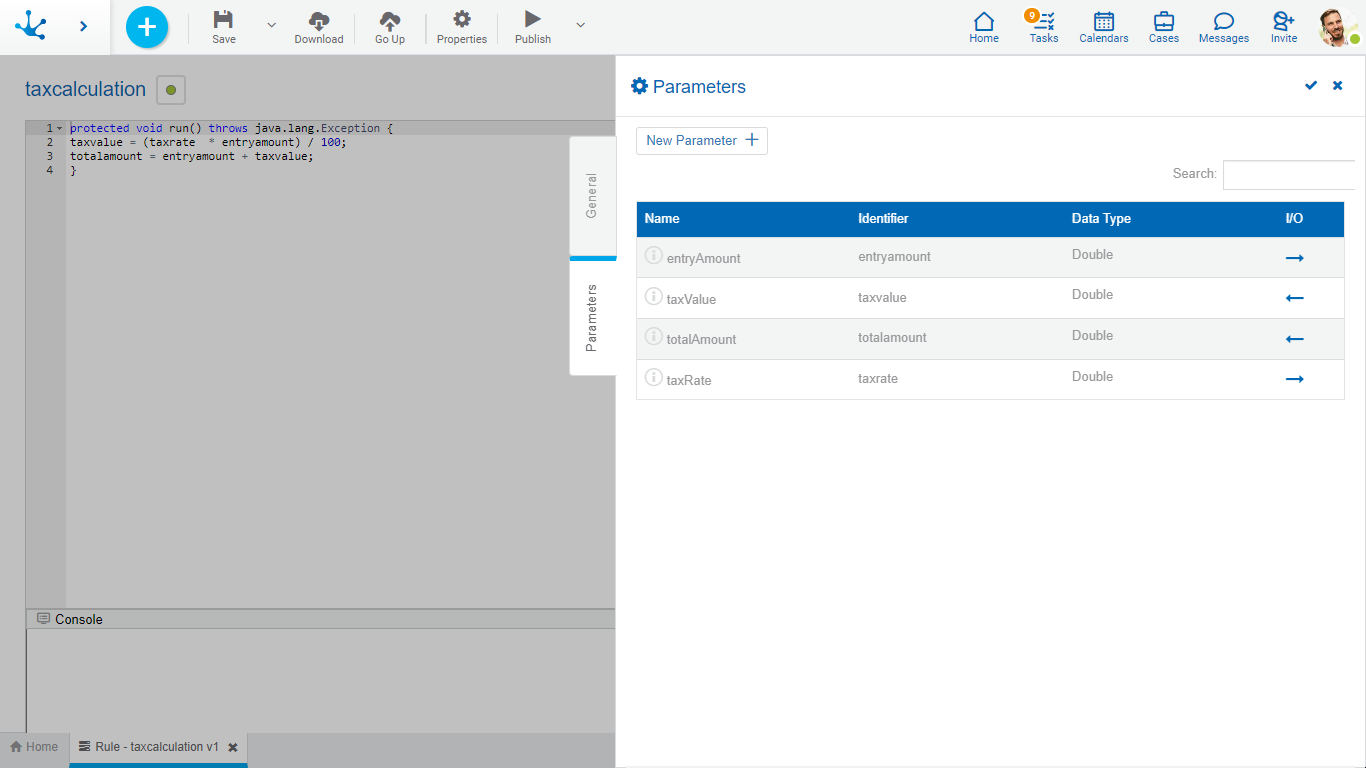
Predefined Parameters of Rules Related to Fields
When a rule is related to a field, the following parameters are displayed on the grid:
•Input
This input parameter defines the search and pagination criteria for obtaining the data. The parameter is of type RuleRelationInput and that object contains the following attributes:
- likeValue: Value entered into an autocomplete field, used as a criterion to filter the possible output values.
- page: Number of the requested results page.
- pageSize: Number of results to display per page.
- currentValues: List of codes previously selected in a field related to the rule, avoiding the repetition of values already chosen.
• Output
This parameter returns the results organized into pages. The parameter is of type RuleRelationOutput and that object contains the following attributes:
- results: List of results retrieved for the relation. Each item in the list is an object of type RuleValue.
- pagin: Set of pagination attributes that allow navigation between results.
RuleValue Object
Each option in the results list is a RuleValue object, and that object contains the following attributes:
- code: A unique identifier for each value.
- value: Description of the value.
Pagin Object
The Pagin object handles the organization of results across multiple pages, and that object contains the following attributes:
- page: Current page.
- pageSize: Number of results to display per page.
- pages: Total number of pages available.
- total: Total number of results.
Creating a Parameter
 It allows adding a new parameter to the grid by filling in all its values.
It allows adding a new parameter to the grid by filling in all its values.
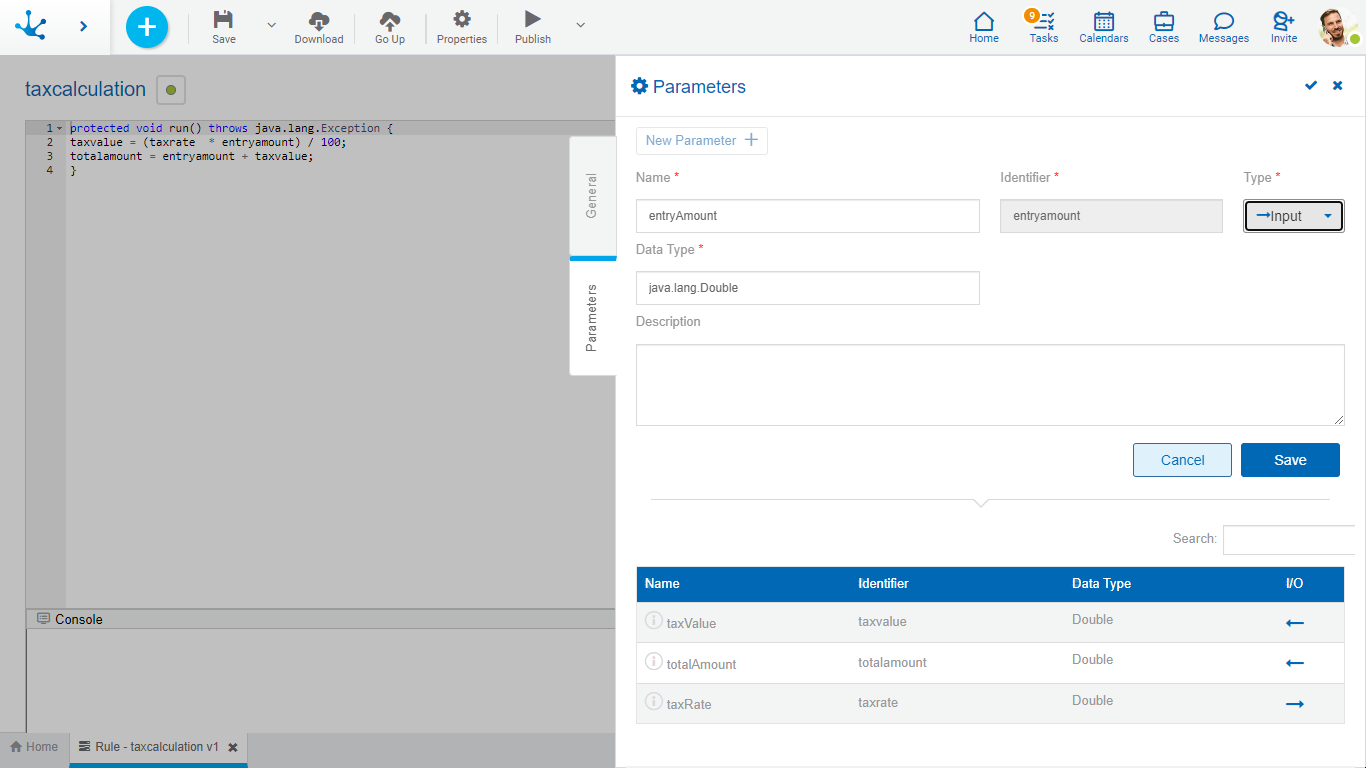
.
Properties
Name
Name the modeler uses to refer to the parameter.
Identifier
Uniquely identifies the parameter. It is used within Java programming code.
Type
Specifies whether the parameter is input  or output
or output  .
.
It can be any type of Java object allowed in Deyel, either a primitive (integer) or an array.
The type wizard, while typing, gives the most common data type values to use.
By placing the mouse over the data type in the grid, the complete data type can be displayed, to help.
Description
Describes the parameter use. Its writing when modeling the parameters is optional.
If it was entered, the colored icon is displayed in the grid, in the Name column  , otherwise the icon is colorless
, otherwise the icon is colorless  .
.
Placing the cursor over the icon shows the help.
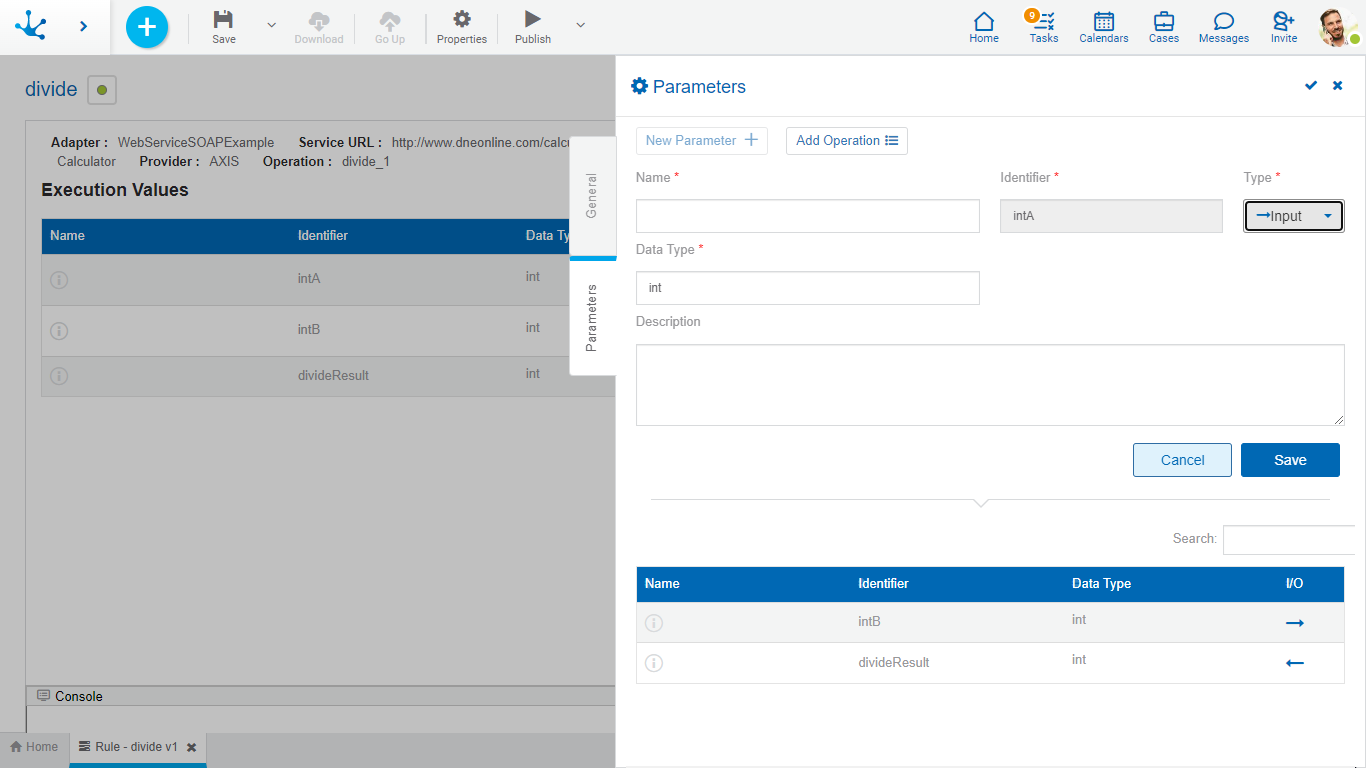
An asterisk "*" on the label indicates that the property is required.
Wizard to Create Parameters in JDBC Rules
 Allows to invoke the wizard available for JDBC type rules.
Allows to invoke the wizard available for JDBC type rules.
This wizard allows to select the parameters defined in the SQL statement as input parameters and the columns resulting from the query execution as output parameters.
In this way, the probability of errors is minimized by not having to manually transcribe the names of columns and parameters.
For the wizard to return results, it is necessary to define the SQL statement to execute before invoking it. If it were a Select statement, each input parameter should be preceded by a “?” mark. If executing a store procedure, the output parameters can also be specified, each of them should be preceded by an "@" character.
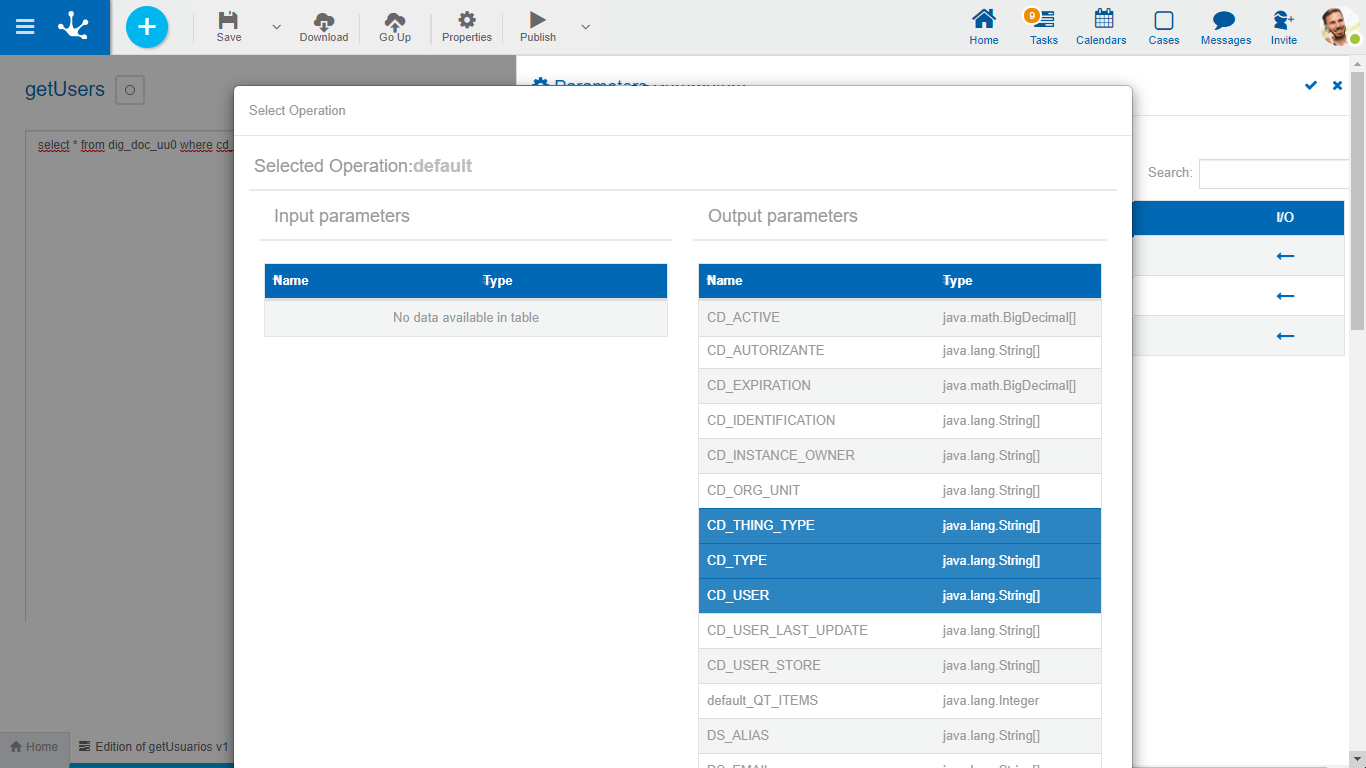
Wizard to Add Operations in SOAP Rules
 Allows to invoke the wizard available for SOAP type rules.
Allows to invoke the wizard available for SOAP type rules.
The wizard analyzes the adapter used and shows the operations available for such object, along with the input and output parameters for each one.
It allows to select the operation that is executed by default and its parameters, to transfer them to the rule interface. In this way, the probability of errors is minimized by not having to manually transcribe the names of operations and parameters.
